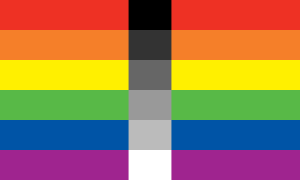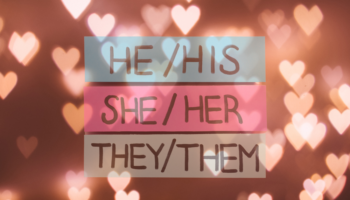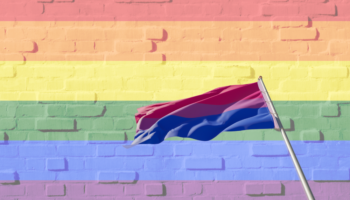Homoflexible is a descriptive term for someone who primarily identifies as homosexual, but is sometimes attracted to the opposite gender. While those who identify as homoflexible typically have relationships with people of the same gender, they may occasionally have feelings for, have sex with, and/or form relationships with people of the opposite gender.
The term anisosexual may be used interchangeably with homoflexible. As with heteroflexibility, bi-curious is a common synonym for homoflexible. This term implies that someone is curious about bisexual sex or relationships, even if they have not experienced them. Someone who is homoflexible may also say that they are "mostly gay."
Origins of the Term Homoflexible
Homoflexible is a combination of the Greek prefix "homo," meaning similar or alike, and the word flexible. Flexible people are open to change and new experiences; by extension, homoflexible people are open to different experiences with people who are alike, or of the same gender.
According to Merriam-Webster, college students began using the term homoflexible in the early 21st century before its usage became more widespread. The term's antonym, heteroflexible, originated around the same time.
Homoflexible vs Bisexual vs Heteroflexible
As people who are homoflexible and bisexual may have sexual and romantic relationships or encounters with people of any gender, some people use these terms interchangeably. Others use the terms differently, believing that homoflexible people feel drawn to people of a different gender only occasionally, while these attractions are more common for bisexual people. Some people may prefer to describe themselves as homoflexible or bisexual, while others may feel both labels apply.
While homoflexible people consider themselves predominantly homosexual, heteroflexible people consider themselves predominately heterosexual. Both labels describe people who have a dominant but fluid sexuality. However, homoflexible people are sometimes drawn to people of the opposite gender while heteroflexible people are sometimes drawn to people of the same gender.
It is also important to note here that the labels homo- and heteroflexible are perceived as biphobic by some. While choosing the label that feels like the best fit is an individual journey, those who find themselves in the middle of the Kinsey scale may consider unpacking any learned biphobia and whether it is impacting they way they choose to identify.
More About Homoflexible
How to Know If You're Homoflexible
As new terms like homoflexible become more accepted, people may wonder whether these labels suit them. Someone may decide they’re homoflexible after evaluating their sexuality and realizing that while they're mostly attracted to people of the same gender, they're open to sexual or romantic experiences with people of the opposite gender.
“To find out if the homoflexible label might apply to you, take some time to reflect,” suggests Brittany Steffen, an AASECT certified sex therapist and marriage and family therapist who specializes in LGBTQ clients. “Are you open to the idea of exploring relationships or experiences with individuals of the opposite gender, even if your primary attraction is towards the same gender? Have you encountered attractions or experiences that deviate from what you might consider exclusively homosexual? Remember, there's no pressure to find a label and define your sexuality, and it's no one's business but yours. If you're having strong emotions around the topic, find an experienced therapist, or better yet, a certified sex therapist, to help you sort through your feelings.”
She adds "It’s important to note that attitudes toward terms like 'homoflexible' or any specific label within the LGBTQ+ community can vary widely. The acceptance of such labels is influenced by factors such as individual beliefs, cultural contexts and evolving societal attitudes. In many LGBTQ+ circles, there is a general push for inclusivity and acceptance of diverse identities and expressions of sexuality. However, it's important to recognize that not everyone within the community may embrace or fully understand terms like 'homoflexible' or other nuanced labels. Some individuals may prefer more traditional categories such as gay or lesbian, while others appreciate and embrace the fluidity that terms like homoflexible represent. Ultimately, your labels are yours to choose - and no one else’s."
The decision about which label to use is a deeply personal one. It may also change over time. However, anyone who feels the term homoflexible describes them best is welcome to use it for as long as it feels appropriate.
Homoflexibility and the Kinsey Scale
The term homoflexibility aims to more accurately describe people who fall somewhere between homosexual and bisexual on the Kinsey scale. Developed by sex researcher Alfred Kinsey in 1948, the Kinsey scale helped categorize people according to their sexuality. People who score 0 are exclusively heterosexual while people who score 6, at the other end of the scale, are exclusively homosexual. Homoflexible people usually sit around a 5 on the Kinsey scale, according to LGBTQIA+ Wiki.
The Homoflexible Flag
The homoflexible flag is similar to the rainbow flag used in the gay pride movement, with six horizontal colored stripes. A monochromatic vertical scale runs down the middle of the flag. It is the inverse of the heteroflexible flag, which is mostly monochromatic with a rainbow stripe down the middle. The rainbow stripes take up the largest part of the rainbow flag, symbolizing that homosexuality is the primary part of a homoflexible person’s sexuality. The homoflexible flag
The homoflexible flag
Image: LGBTQIA Wiki



